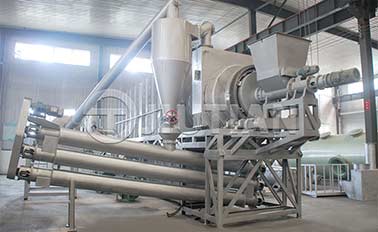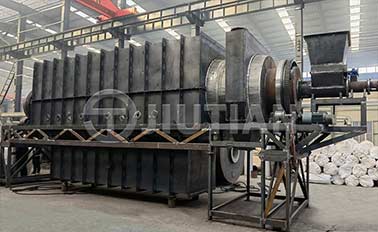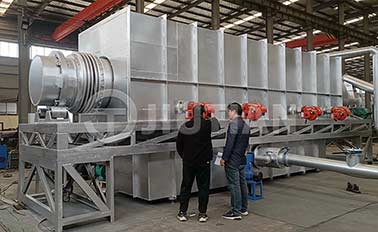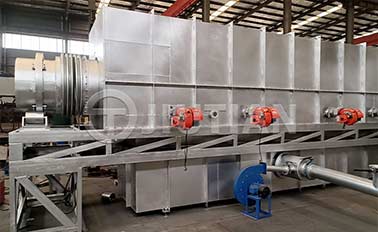The tar produced by the biomass carbonizer during the carbonization process can be treated in a variety of ways. The following are some common treatment methods:
一、Separation and collection
1. Condensation and precipitation:
o During the carbonization process, use appropriate equipment and processes to separate and collect wood tar.
o Use coolers and separators to condense and separate wood tar from the fuel gas.
2. Optimize carbonization conditions:
o Carefully adjust parameters such as atmosphere, oxygen content and heating rate during the carbonization process to minimize the generation of wood tar.
o For example, using an oxygen-free or low-oxygen environment to reduce air contact can help reduce the generation of wood tar.
二、 Refining and purification
1. Removal of impurities:
o For the collected wood tar, impurities can be removed by distillation, filtration, precipitation and other methods to improve its quality.
2. Purification treatment:
o Refined wood tar can be used to make various products, such as wood vinegar, asphalt, dyes, etc.

三、 Thermal cracking and catalytic cracking
1. Thermal cracking:
o Thermal cracking of tar can decompose tar into permanent gas, which can be used together with combustible gas.
o However, thermal cracking requires very high temperature (1000~1200℃), which is difficult to achieve.
2. Catalytic cracking:
o By adding catalyst, the temperature of tar cracking is reduced to about 750~900℃, and the efficiency of cracking is improved.
o Catalytic cracking is one of the most effective and advanced methods for treating tar.
四、 Other treatment methods
1. Water washing or filtration:
o Simple water washing or filtration can separate tar from gas, but this method only discharges tar as waste, which not only wastes the energy of tar itself, but also causes serious pollution.
2. Use tar cleaning agent:
o Tar cleaning agent is a water-based environmentally friendly cleaning agent with strong penetration, dispersion, solubilization and emulsification effects, and has good cleaning ability for grease and dirt.
o Apply a layer of tar cleaning agent inside the pipe to reduce the generation of tar and coking.
五、 Prevention and reduction of tar generation
1. Control the carbonization temperature:
o Selecting an appropriate carbonization temperature can affect the amount of wood tar generated.
o A lower carbonization temperature can reduce the formation of wood tar.
2. Choose the right wood:
o Different types of wood will produce different amounts and properties of wood tar during the carbonization process.
o Selecting wood types with a lower tendency to generate wood tar can reduce the generation of wood tar.
In summary, the tar generated by the biomass carbonizer can be processed and utilized in a variety of ways. During the processing, it is necessary to select the most appropriate treatment method according to the actual situation, and comprehensively consider the economic benefits, environmental benefits and safety benefits.
If you have any equipment needs, please feel free to contact us Zhengzhou Dingli New Energy will serve you wholeheartedly!






